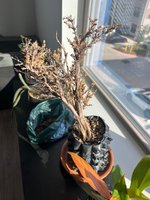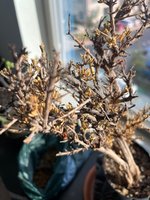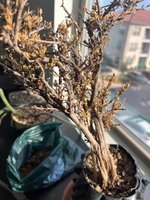newtreeguy
Seed
- Messages
- 1
- Reaction score
- 0
Found this guy on a dirt bike trail, was in basically sand. I definitely hurt the root system pulling it, but it still had a good strong tap root. I’ve since put them in a root pot with well draining 90:10ish rock:soil mixture. I water from the bottom.
Not sure if a cedar or juniper, I did collect some small black seeds from small flowers.
I know it looks dead in the photos. In person it doesn’t look great but there has been some slow growth and the leaves near the core are in a fluctuating state of green.
It’s inside, morning and evening sun. Likely going to out it outside, but it did get more green when I brought it inside and put it under a grow light.
Not sure if a cedar or juniper, I did collect some small black seeds from small flowers.
I know it looks dead in the photos. In person it doesn’t look great but there has been some slow growth and the leaves near the core are in a fluctuating state of green.
It’s inside, morning and evening sun. Likely going to out it outside, but it did get more green when I brought it inside and put it under a grow light.



